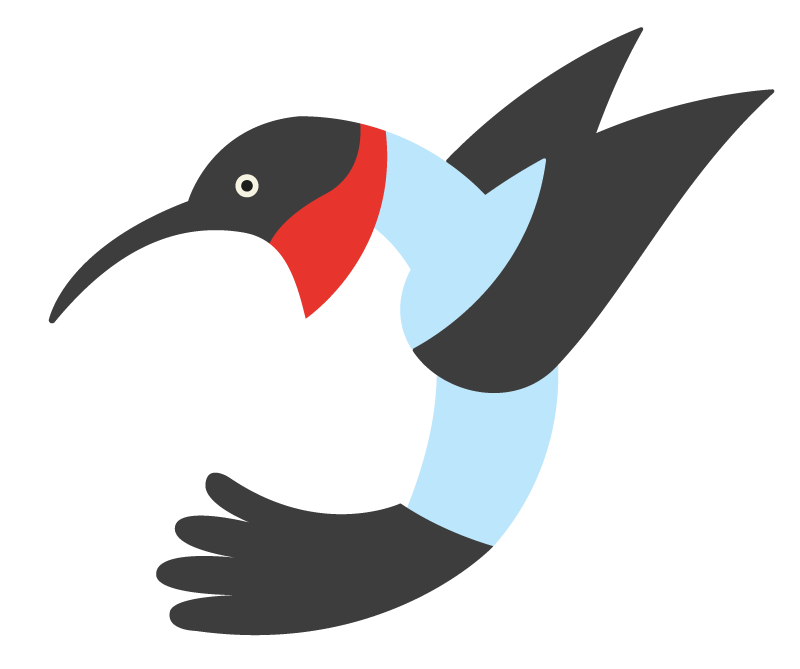HAnnah Tatman
TV for Your Cat
A window mounted bird feeder
project. Designed for viewing
wild birds just inches away.
Task Outline
The main requirement for this assignment was to design a bird feeder that could be mounted on a window. The users should be able to clearly watch wild birds from the comfort of the indoors. The design should both accommodate both sets of users: humans and birds. The final piece should be both attractive and easy to use. Beyond those factors, the design must take into account manufacturing costs and material limitations.
Brainstorming
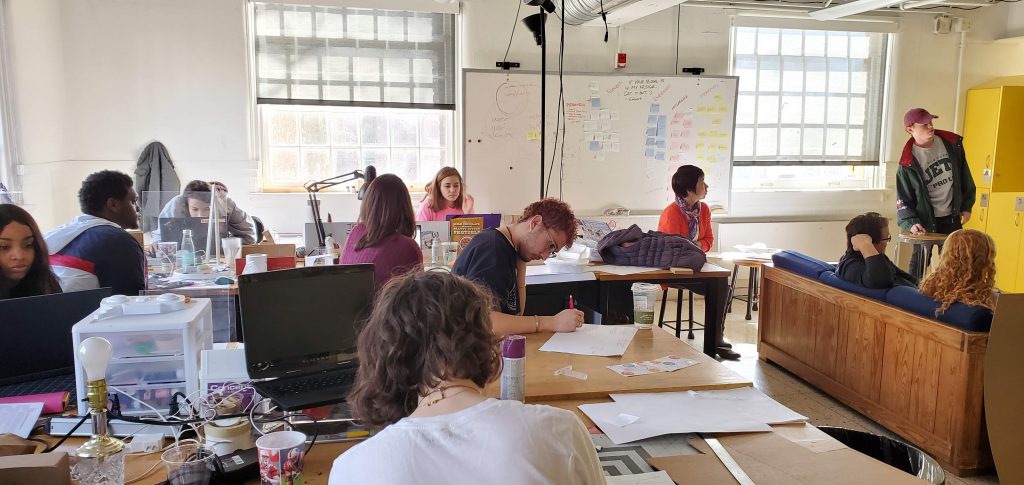
As a class, we came together to discuss directions to pursue. Three topics of focus were manufacturing feasibility, business viability, and user needs and desires. We brainstormed features that our feeders may have, the aesthetic that we wanted to convey, and experience we wanted to create for the users. This was the starting point in my ideation process.
Ideation
I gathering as much knowledge as I could about bird feeders in general. There are many different types, such as hopper, tube, suet, and nectar feeders. Each type attracts a certain type of bird. This research inspired me to focus on creating a feeder that would attract a specific native bird.
I also researched types of materials bird feeders are made of. I found that they can be created out of virtually anything, but there are some materials that are better suited for different types of feed. For example, suet cages are typically made of metal as it protects the feed from squirrels.
Lastly, I searched the different types of window attachment methods. There are only a few available options that will work with most residential windows. Suction cups are the best option; they are cheap, easily replaceable, and do not harm the window when attached or removed.
Based off of the research I completed above, I designed three preliminary sketches each designed with a specific native bird in mind. The first one is a round suet feeder for woodpeckers, such as the Red-Cockaded Woodpecker. The second design is a pan feeder designed for the Ruby-Throated Hummingbird. The last design is a platform feeders that caters towards the Carolina Chickadee.
I ultimately decided to pursue the hummingbird direction. I was interested to push myself and see if I could create a feeder that was water-tight and aesthetically pleasing.
User Research
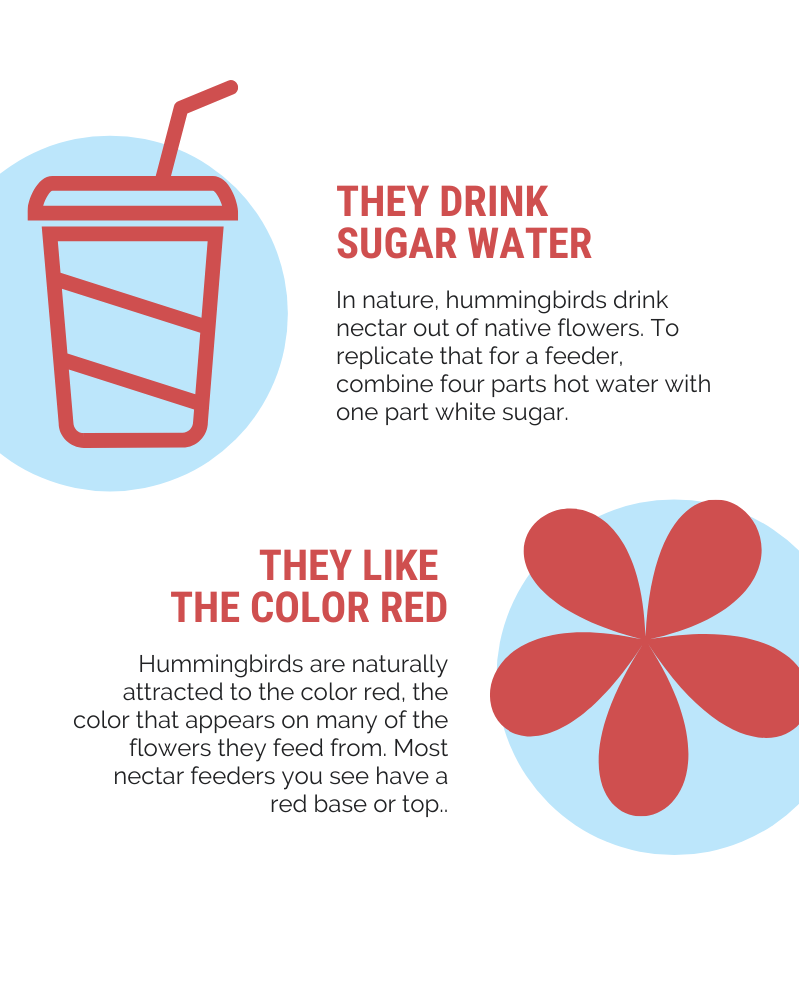
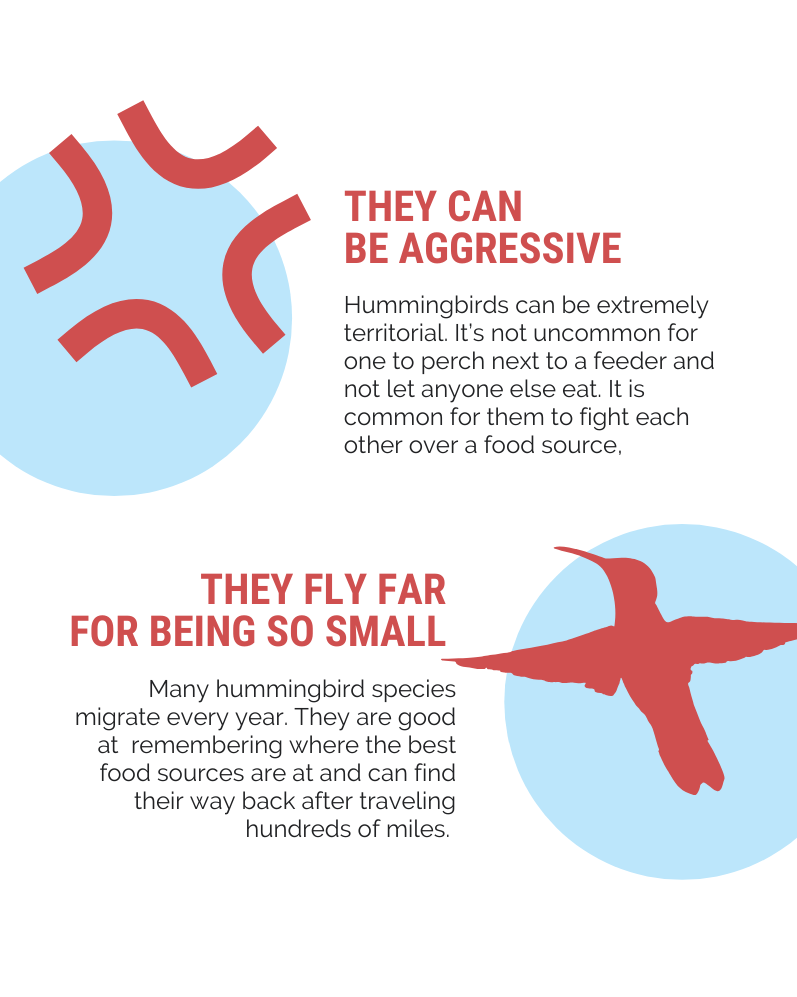
Hummingbirds are birds native to the Americas. They are the smallest of birds, most species measuring 3-5 inches in length. They have long, narrow bills and small, saber-like wings. Hummingbirds are the only vertebrates capable of sustained hovering, and they can fly backward and upside-down as well.
Their high-energy lifestyle compels hummingbirds to locate reliable food resources. They feed on flower nectar and small bugs. To create a hummingbird feeder, one needs to use sugar water as a food source. There are currently two types of nectar feeders available: pan type and vacuum type. For this project, I will be focusing on the pan type. This style of feeders is usually flat-bottomed with a nectar well beneath the food ports. This design is considered superior as it will not leak, drip, or spill under normal conditions. The feeder and the outside of the feeder remains dry making them bee- and wasp-proof. Usually, pan type models have a perch ring around the circumference which prevents the hummers from expending more energy than needed to feed
Initial Sketches
I created three different ideation sketches for the hummingbird feeder. Each design is based off of a native North Carolinian flower of which hummingbirds naturally feed.
First there is the Crossvine. This is a dark green vine which grows extremely quickly. The heavy blooms of crossvine are its main attraction. The vines almost completely cover themselves with clusters of 2-inch, trumpet shaped flowers in various shades of yellow, buff-orange, brick and red. This plant is also called the Trumpet Vine, so I wanted to keep that shape apparent in the feeder.
Next, there is the Carolina Jessamine. a twining, evergreen vine that will climb trees and scramble over structures. It has clusters of very fragrant, yellow, trumpet-shaped flowers. I mirrored the organic lines of the trumpet-like shape created by the flower.
Lastly, is the Red Buckeye. This is a handsome shrub or small tree with clusters of deep red or yellow, flowers in early spring. This is a sturdier plant, so I conveyed that through the use of a more geometric base. To show the little clusters of flowers, I added many feed holes in the side.
My favorite design was the “Crossvine.” I thoroughly enjoyed the trumpet-like form; it best represented the flower that it was based off of. I did not like the fact that there was material between the viewer and the hummingbird. This would have obscured the view, especially if there was sugar water in the reservoir. So, I began experimenting with cutting out the middle of the form. This allowed for an obscured viewing experience.
Here, I took the trumpet form and tried to simplify it even more. I was not in loved with the scalloping at the bottom of the original Crossvine design; it looked a bit squid-like to me. I focused more on creating a thin top and a wide bottom, like a trumpet. The tear drop-like form seemed more elegant. I also experimented with different ways of attaching the feeder to the window, with a hook suction cup attachment and cups that connect to the feeder directly.
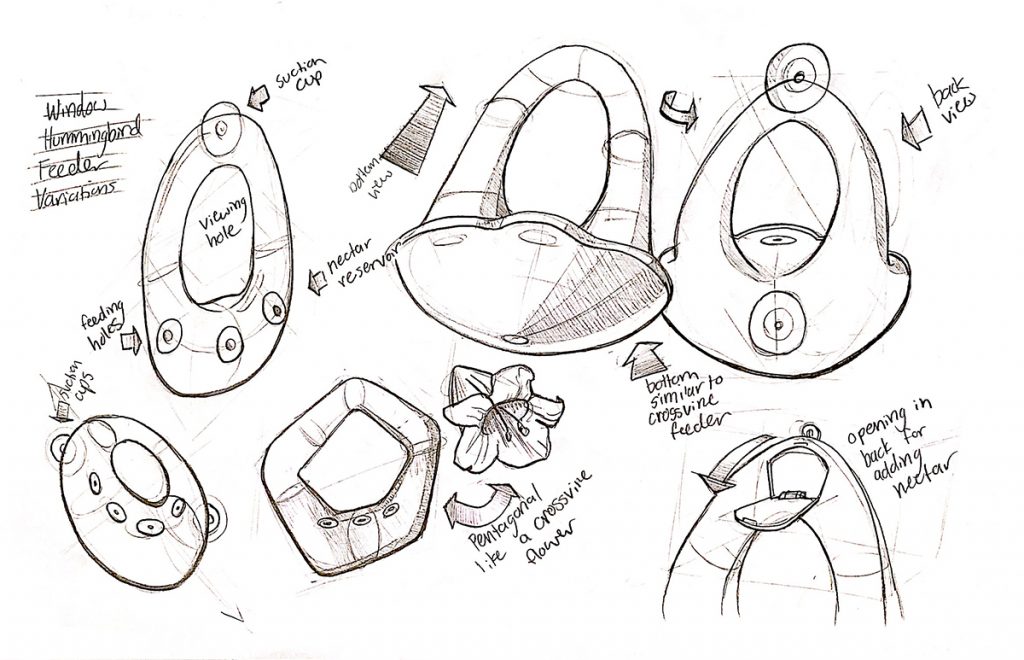
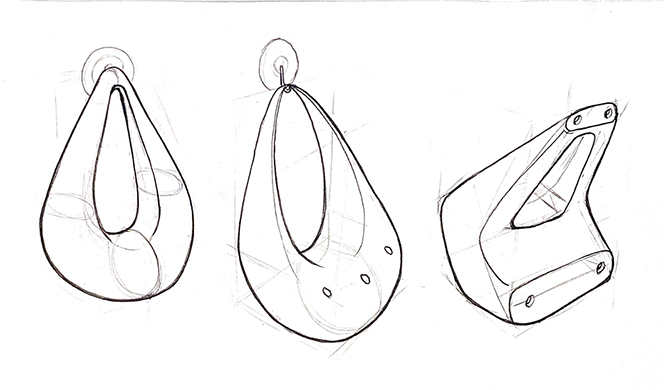
Final DEsign: "Crossvine"
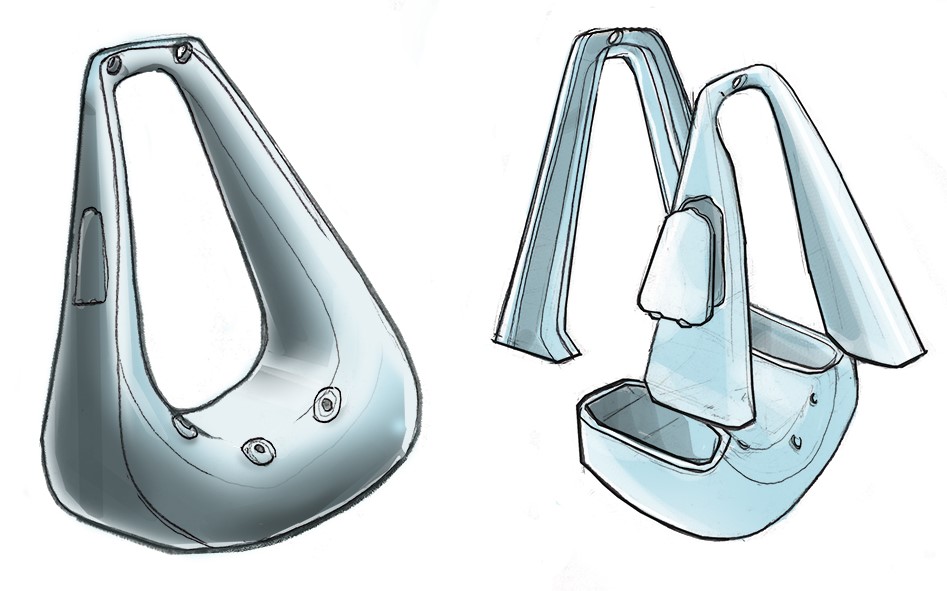
Here is my final feeder design. It is a simplified version of the original “Crossvine” sketch. I extended the cut out so that it goes almost to the bottom of the form for maximum viewing space. I included three feeding ports so that only a few hummingbirds can use it at one time. This is to minimize territorial disputes. I added an opening on the side. This is where the human user would add the sugar water. The opening is above the water line to prevent spillage. I holes in the back that allow for the attachment of suction cups.
I proceeded to model the design using Solidworks. It took me a while to get all of the sides rounded and the angles how I wanted them, but overall I think it turned out well. This feeder is about 8 inches long, 5 1/2 inches wide, and 3 inches deep. This may seem a bit small, but hummingbird feeders are traditionally not very big. This feeder has a hollow inside and should be able to hold 10-12 oz of liquid. The feeding holes are 3/32 of an inch, which is the perfect size for hummingbird beaks. Too small and the hummingbirds cannot reach the sugar water. Too large and bugs will get into the holes. I added three holes for suction cups, to support the feeder. The typical suction cup will support up to 5 lbs, so this bird feeder should not detach from the window (with the sugar water, the feeder will only weigh a little over a pound. After modelling this, I imported the design to Keyshot.
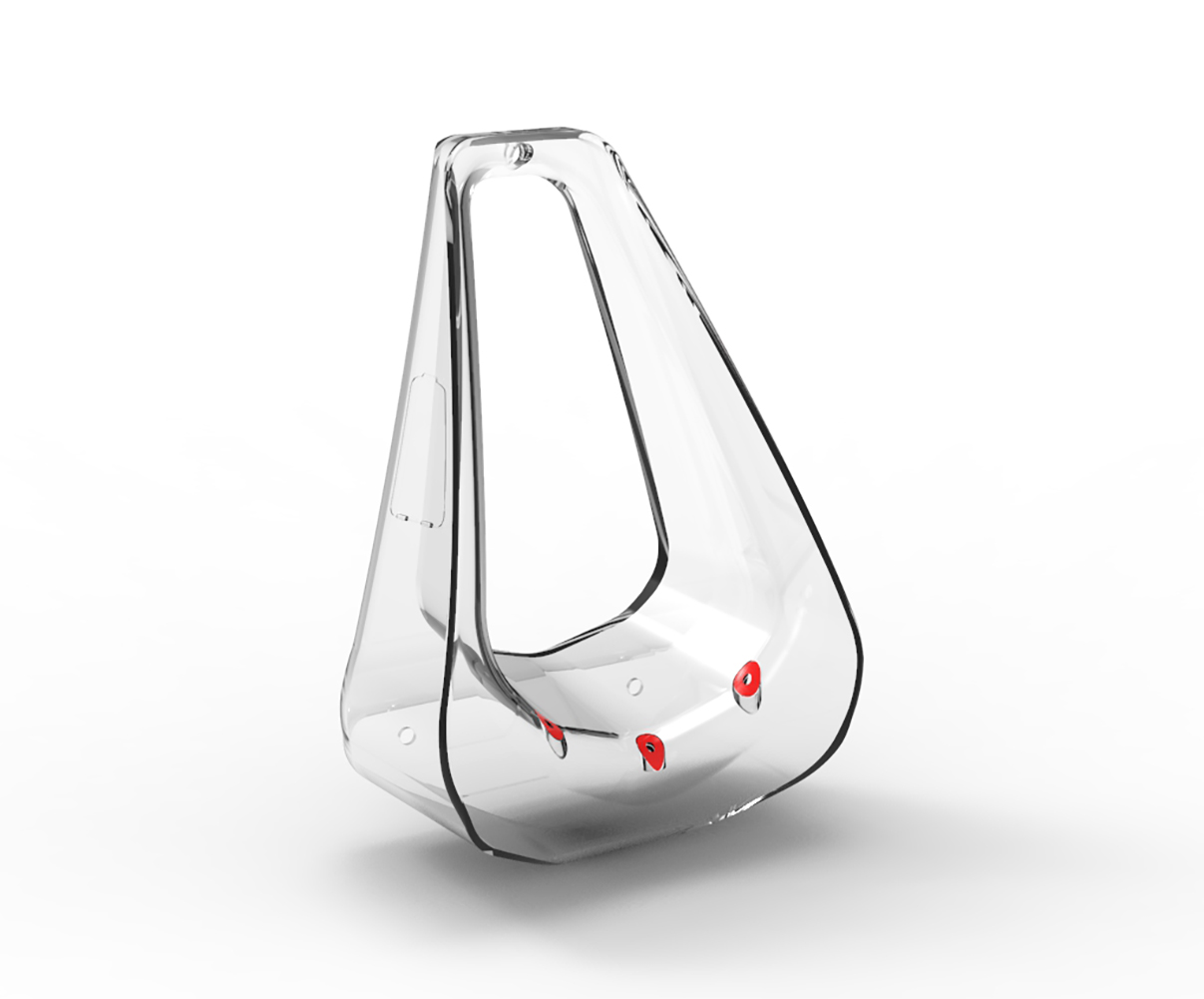
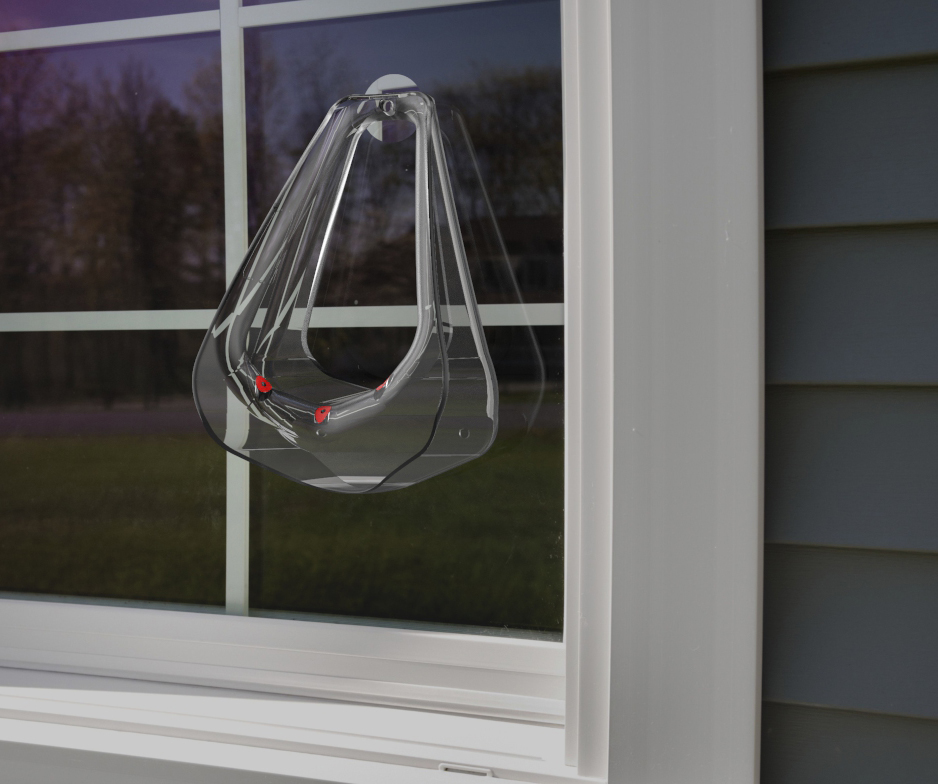
Here is the final rendering. I constructed this form out of UV Stable Polycarbonate – the strongest, most optically clear plastic on the market. The UV stabilizers perform two functions. They prevent the damaging rays of sunlight from degrading the quality of the material and enable that material to last many, many years. The second function is to delay the sun’s rays from spoiling the nectar too quickly. This material is bit more expensive, but lasts much longer. The feeding ports are bright red to attract the hummingbirds to the feeder. The clear plastic also allows the viewer to keep an eye on the sugar water. You will be able to tell if any bugs have enter the feeder or if the water has spoiled. The bright red circles stand out greatly from the rest of the clear plastic and are easily seen.
Final Thoughts
Unfortunately, the physical product was not able to be produced due to the circumstances surrounding COVID-19. I was planning on creating a mold of the shape and vacuum forming clear plastic over it. Even though I was not able to bring this product into the physical world, I was able to bring it to life virtually. I was able to hone my sketching, 3D modelling, and rendering skills. As a future designer, I must learn to remain flexible and create the best I can amidst unfavorable circumstances. This project has helped prepare me to do just that.
